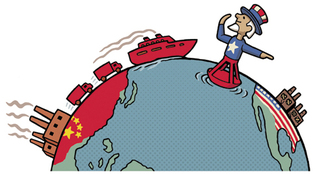 loading
loading
FindingsHow trade policy sent jobs to ChinaEmployment growth sank by 30 percent in US manufacturing.  Gregory NemecView full imageThe United States has undergone a process of deindustrialization over the past four decades. But how much have US trade policies contributed to it? A paper coauthored by Peter K. Schott, an economist at the School of Management (SOM), seeks to connect some of the dots. Schott and his coauthor, Justin R. Pierce of the Federal Reserve, say they have found a correlation between re-duced US manufacturing job growth during the years 2001–07—a time of overall economic growth—and the implementation of “permanent normal trade relations” (PNTR) with China in late 2000. Production-line jobs “are more likely to disappear during economic downturns,” they write; “here, we show that in manufacturing, this disappearance can be associated with a major change in US trade policy.” The paper was published online by the National Bureau of Economic Research. Before PNTR, normal trade relations with China were renewed annually, so there was always a risk that tariffs on imports would increase. PNTR “did not affect the level of tariffs the US applied to Chinese imports,” Schott told SOM’s Yale Insights. “Rather, it eliminated uncertainty about those tariffs.” The result: “According to our estimates, employment growth in the average [manufacturing] industry was 30 percent lower” after the period 2001–07 “than it would have been had the decline in uncertainty not occurred,” Schott said.
The comment period has expired.
|
|